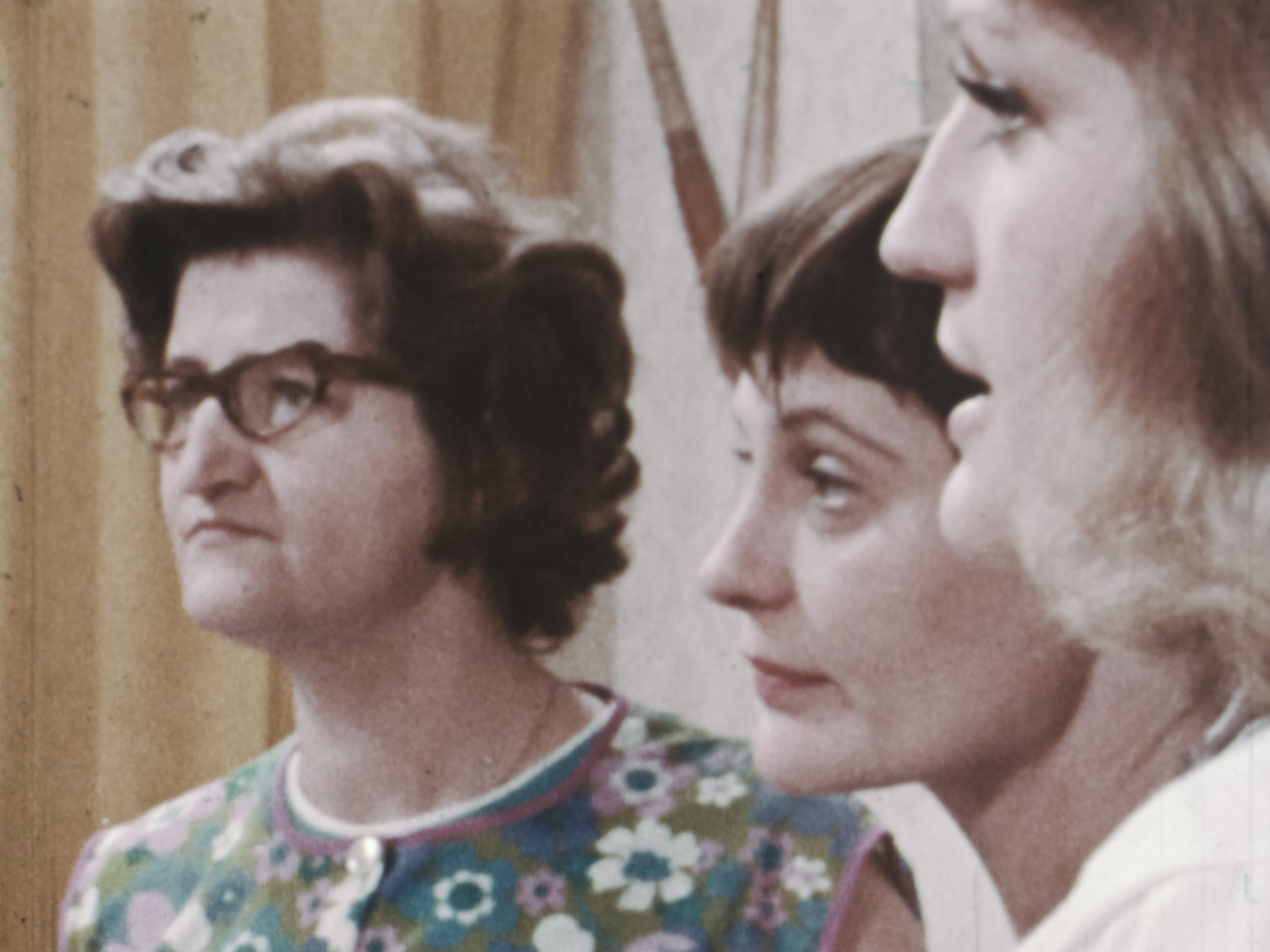
Shot whilst she was a student at the DFFB and collaborating with women who lived and worked within the Märkisches Viertel, a housing estate in the North-West of Berlin, Perioncioli constructs the story of four women who work in a supermarket., After discovering the pay imbalance between them and their male colleagues, the women decide to go on strike. Fiction staged from reality, Für Frauen. 1. Kapitel offers a still blistering example of collectively made and politically engaged cinema. (Courtisane)
EN
“This is the basis for every other type of social oppression of women. In this film, we see the interpersonal problems women must resolve among themselves before they can act together against the boss. Following this realisation, we women wrote this film together and made it ourselves. That was a lot of fun. Our realisations in the process were: We don’t need liberal filmmakers to take on the subject of emancipation. We demand that the means of production be in our hands!”
Cristina Perincioli1
“People at the film academy often spoke of the ‘camera as weapon.’ We could not expect to gain permission to film the go-in from either the GeSoBau or the District Office. I took a video camera with me anyway to document events for the group, to back the women up and naturally to signal ‘public interest.’ Nowadays every TV magazine program uses this method of intervention by camera, of muscling in against the will or without the knowledge of the other side. After all, image rights, which in those days still made such actions impossible, can now be evaded by electronically distorting the faces of those involved. And the video camera was not one of those handy little items tourists take with them on vacation nowadays; it was a piece of ‘portable’ video equipment weighing 45 pounds. It would be years before the film academy warmed to this new technology. I got the camera from my anarchist contacts, from Philip (Werner) Sauber, one of my fellow students expelled from the film academy. In 1970 he had purchased the first portable video equipment in Berlin with the DM 18,000 compensation he had received.
When we arrived at the GeSoBau office the employees sprang from their chairs, gesticulating and above all ordering me to stop filming. So I removed the monster from my shoulder, clamped it under my arm and continued shooting. Now the women announced their demands with an eloquence and verve that I would never have thought them capable of, since I had experienced them only as silent knitters. They were strong, loud, furious and united. I was thoroughly impressed; I had never seen women give such a performance before, not even in a film. Feisty women did exist! I wanted to make my degree film with these women, but not only that, we would develop it together: a mouthpiece for these fantastic women, who had never had a chance to speak out before!”
Cristina Perincioli2
Front Image: Courtesy of Deutsche Kinemathek
- 1Cristina Perincioli, “For women. 1. chapter,” film information sheet no. 41, July 1971.
- 2Cristina Perincioli, Berlin Goes Feminist. Anarchism - Lesbianism - Feminism. Originally published as Berlin wird feministisch. Das Beste, was von der 68er Bewegung blieb (Berlin: Querverlag, 2015). Translated by Pamela Selwyn.

